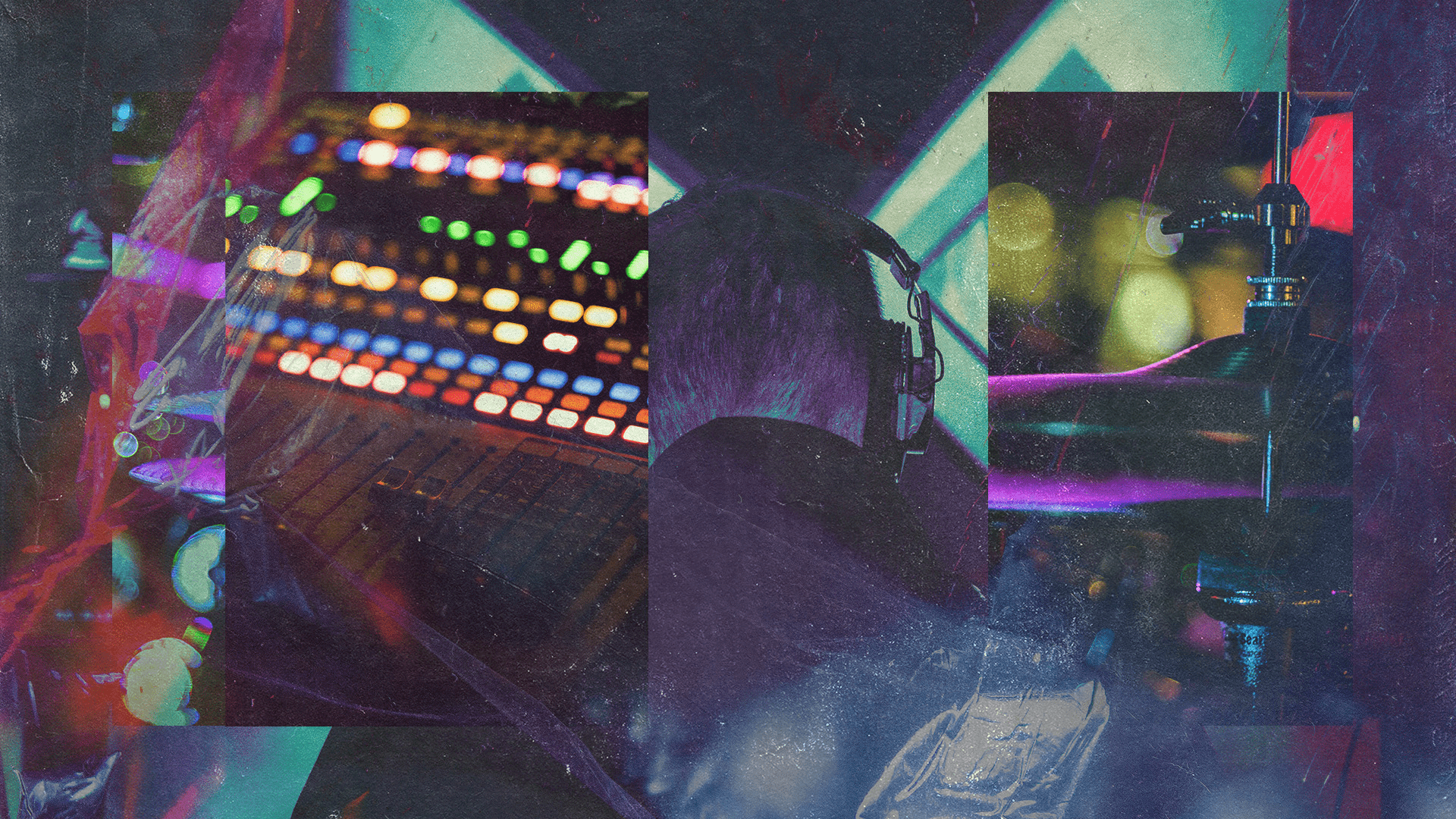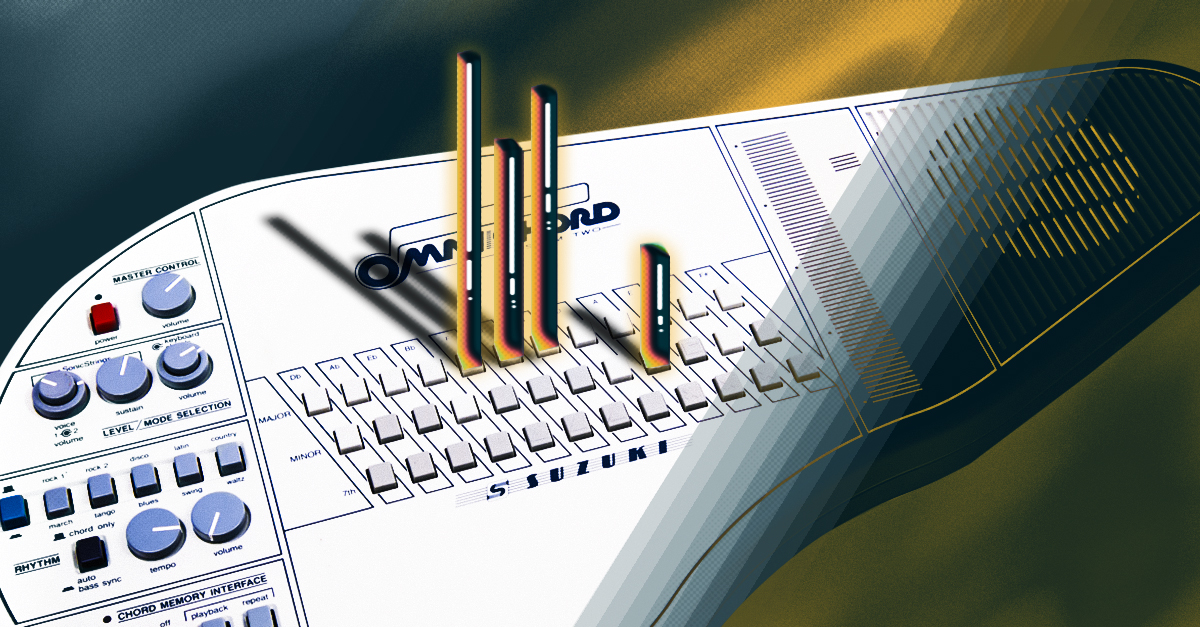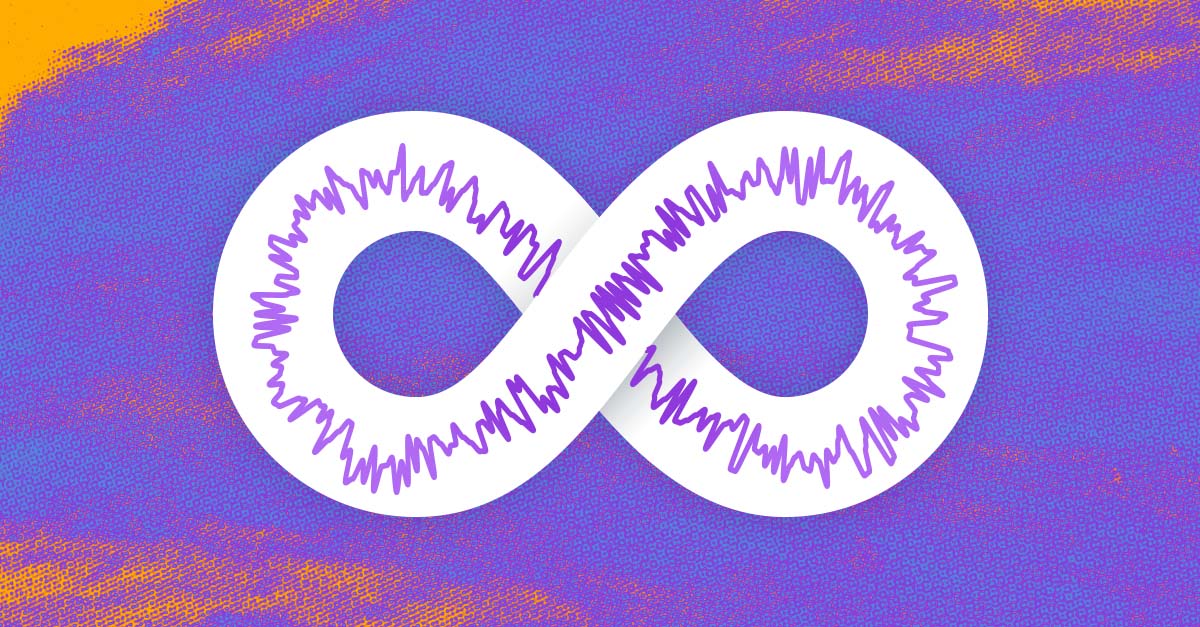
How to Make Music: 9 Steps for Every Beginner
How do you make music when you're starting out from scratch? With the right tools and resources, it's easier than you think.
Whether you want to make music as a hobby or a profession, it’s all just a matter of inspiration, learning, and practice.
We’ve put together a beginner’s guide that will take you through the entire process, one step at a time.
You can bookmark this page and think of it as a home base to keep coming back to as you learn.
Use the table of contents, treat each step as a jumping-off point, and explore the related links when you want details.
Ready? Let’s roll.
1. Don’t be intimidated
Even if you’re a vocalist or you play an instrument, the process of music production might seem complicated or difficult.
When you’re learning how to make music for the first time, it’s important to not let yourself be intimidated.
Don’t expect to create a viral hit right off the bat, and avoid comparing yourself to producers with access to lots of gear and industry connections.
Instead, focus on tackling individual parts of the learning process and getting them right.
As you gain more experience and confidence, you can step outside your comfort zone and challenge yourself.
There are more tools and resources available to beginners than ever, and we’re all about connecting you with the best ones.
2. Listen to a wide range of music
One of the most underrated steps of learning how to make music is also the easiest—listening.
Put on music you already know and love, but listen to it in a more detailed way than usual.
What instruments and sounds do you hear, and how are they layered together?
How does the song change over time, and how does it keep your attention? What makes you want to hear it again?
Do the same thing with music you haven’t heard before. Make a habit of discovering stuff you don’t usually listen to.
Be sure to explore music from different eras and parts of the world, too. You never know where inspiration and influence can come from.
3. Explore songwriting and music theory
You might already have experience with songwriting and music theory through an instrument you play.
If you don’t, that’s okay too. There are a lot of music theory resources to get you started.
Plenty of people make excellent music without being music theory experts, but it’s a good idea to know these basic concepts:
The formal elements of music (like arrangement and song structure) are focused on the way a song changes over time and how different instruments or sounds are layered.
The tonal elements of music (like melody and harmony) are focused on how notes and chords are used, their relationships with each other, and the moods or feelings they create.
The rhythmic elements of music are focused on how repetition and timing are used to create patterns and grooves that hold the listener’s attention—and get them moving.
The texture and timbre of music can be tricky to pin down—they’re generally focused on the character and qualities of sound that can’t be summed up by tone and rhythm alone.
Finally, the expressive elements of music relate to the endless different ways that tones and rhythms can be played—soft, loud, slow, fast, and everything in between.
Some of this might sound pretty obvious, but when you keep these basic components in mind, you can use them as building blocks.
You can also listen to songs you love, pay attention to how they use these elements, and see what you can borrow for inspiration.
From there, you can better understand what makes a memorable hook, an infectious rhythm, and a compelling song structure.
Our top guides on music theory

4. Know your instruments
Most people either have an instrument they know how to play, or an instrument they’re drawn to and want to explore.
Whether it’s a stringed instrument, percussion, or just your voice, there are a lot of beginner-friendly options.
What matters is that you’re genuinely into it and want to spend a lot of time with it.
Even if you’re not interested in playing any instruments in particular, it can still pay off to learn about them.
How do you record and mix vocals, mic a drum kit, or make a piano sound full and detailed?
These are all questions you’ll eventually come across as you learn how to make music.
You’ll be more prepared to answer them if you stay curious about how instruments work, how they’re used, and how they sound.
5. Learn how to use music production software
DAWs
One of the most important tools you can have when learning to make music is a DAW (digital audio workstation).
This is a type of software that functions as the brain of a modern music production studio.
You’ll use it to create, record, and arrange sounds before mixing them down to create a song.
Examples of the most common DAWs are Logic Pro, Pro Tools, Ableton Live and GarageBand.
Some DAWs can be a bit of an investment, while others are completely free.
Ableton makes a beginner version of Live called Live Lite, which gives you all the core functions you need.
In our experience, it’s one of the easiest DAWs to learn, especially considering its feature set.
LANDR Studio also includes it in a bundle with some of the best plugins on the market right now.
Instruments and effects
Within your DAW, you can use virtual instruments to create sounds and audio effects to process and change those sounds.
Examples of virtual instruments are software synthesizers, samplers, and drum machines.
Some of the most important effects are equalizers, compressors, and reverb.
DAWs usually come with instruments and effects, but you can also install additional ones called plugins (sometimes called VSTs).
There are countless plugins available today at every imaginable price range, including many excellent free ones.
When it comes to both these and your DAW, it can be tricky to choose which music software tools are right for you.
Since you’re starting out, we recommend getting a focused selection of essentials rather than diving into the deep end.
Meanwhile, if you want to record live instruments and vocals, you’ll need an audio interface, which turns analog audio signals into digital audio that can be captured by your DAW.
MIDI and sequencing
Another essential concept to understand is MIDI (Musical Instrument Digital Interface).
In a nutshell, MIDI is a digital representation of musical notes and other data.
A MIDI keyboard allows you to physically play musical notes in a virtual instrument, and a MIDI controller allows you to physically tweak the parameters of music software tools.
If you don’t have a MIDI keyboard or controller and don’t want to invest in them yet, don’t worry.
Your DAW has at least one built-in sequencer tool, which allows you to create patterns of notes, chords, or drum hits for your virtual instruments.
Usually, it’s a digital representation of a piano keyboard called a piano roll, but there are many different types of sequencers and sequence generators available today.
Mastering
When the mixdown of a song is completed and exported from a DAW, the final stage of production is mastering.
Mastering is the process of fine-tuning your end result with EQ, dynamics, and other tools.
The goal is to achieve the appropriate quality and loudness for your music. It also ensures that your music sounds consistent across different types of speakers and listening settings.
But before you get to that point, it’s important to jump into your DAW and get some hands-on experience.
6. Play around with loops and samples
One of the best ways to get more comfortable with a DAW is to build a song using high-quality pre-made loops and samples.
This way, you don’t have to record or play your own material. Instead, you can focus on building your skills in arrangement, effects, and mixing.
Decide what kinds of instruments and sounds you want your song to have, make a manageable selection, and import them into a new project in your DAW.
Experiment with effects, pay attention to how different sounds work together, and get a sense of how the arrangement feels.
You might be surprised by how fast and easy it is to learn music production when you dive into it this way.
You can also load royalty-free samples into a sampler plugin and experiment with different ways of sequencing them.
7. Produce and mix your music
By this point, you should be comfortable with the basics of music theory and your music production tools.
Ideally, you know:
- How to build a simple song structure
- How to program simple melodies and chord progressions
- How to program simple drum patterns
- The basics of samplers, drum machines, and synths
- The basic functions of your DAW and how to use MIDI
- How to record audio into your DAW through an interface
- The basics of effects like delay and reverb
- The basics of mixing like EQ, dynamics, and levels
- The basics of mastering
Now, collect some loops and arrange them in a new project, like you did when you were getting to know your DAW.
Then, record and program some of your own sounds on top of them.
As you continue to add and adjust new elements, you should be able to build a song that integrates pre-made sounds and your own material.
Pay attention to how all the elements fit together. Use the skills you’ve developed to get a mixdown that delivers results you’re looking for.
8. Master and release your first song
Once your song feels complete, take some time and come back to it a bit later for a full listen.
This gives your ears a chance to hear it in a way that’s more similar to someone hearing it for the first time.
When you’re finally happy with it and have exported your mixdown, you can have it mastered by an engineer or use an AI mastering plugin like LANDR.
Then comes the best part—releasing your song.
For the best exposure, we recommend releasing your own music through a distribution platform and promoting it consistently .
You might even be ready to make a few more tracks and share them with the world as an EP or album.
9. Practice, make mistakes, and collaborate
Learning to make music is a journey that’s always unfolding.
Even the most experienced musicians and producers learn new things all the time, and there’s always more music to discover and be inspired by.
If you want a strong set of skills that will take you far, it’s all about staying open to improvement, experimenting, and not being afraid to make mistakes.
It’s also a must to collaborate and make connections with other artists.
Even if your favorite producer seems like a lone wolf and a solitary genius, no musician has gotten anywhere without a scene and a community.
Whether it’s online, in real life, or both, seek out new people to work with and learn from. These relationships are often where some of the best stuff happens.
Put all of these pieces together, and you have everything you need to make music you’re truly proud of.
Gear guides, tips, tutorials, inspiration and more—delivered weekly.
Keep up with the LANDR Blog.





















